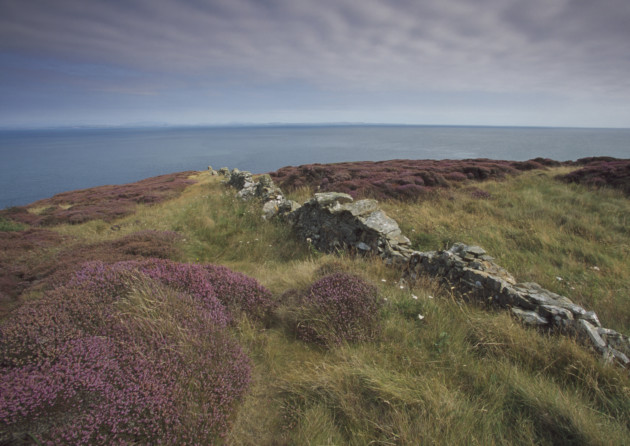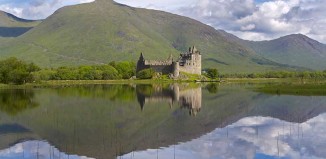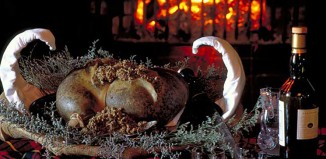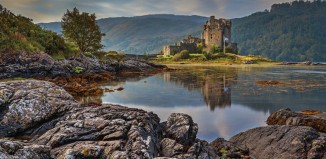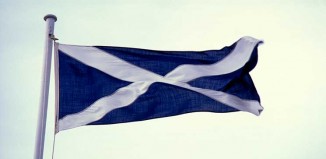Discover the beauty of Scotland’s Galloway coast
Keith Fergus
Tucked away from Scotland’s main tourist trail, the little-known Galloway coastline has it all – sumptuous scenery, abundant wildlife, a unique history and barely another person in sight.
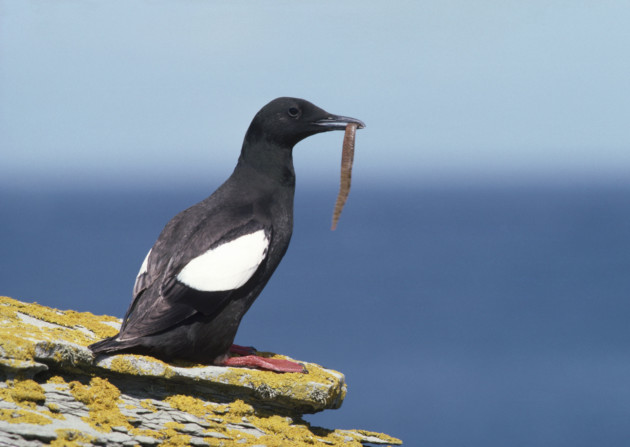
Black guillemot. Chris Gomersall (rspb-images.com
Very much part of Scotland’s western seaboard, yet often overlooked by visitors heading north to the wild attractions of the Ardnamurchan Peninsula or the necklace of white beaches in and around Arisaig, the Galloway Coastline might just be one of Scotland’s best kept secrets.
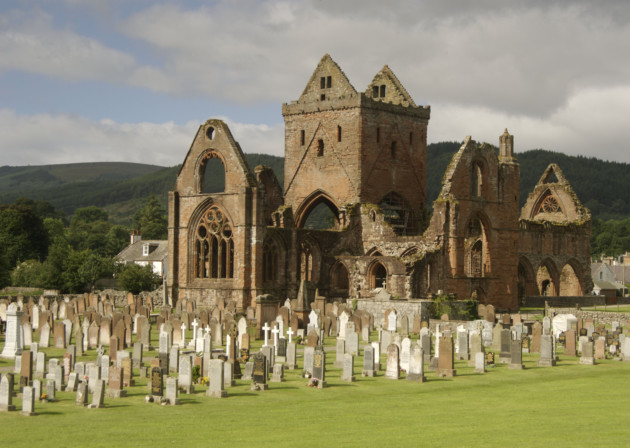
Sweetheart Abbey. Historic Scotland/Michael Brooks
However, those who do turn off the A74(M) to join the coastal road at Gretna are rewarded with some 200 miles of the finest scenery Britain has to offer, where deserted sandy bays and gentle wooded shores are punctuated by towering sea cliffs, yacht-dotted estuaries and timeless seaside villages.
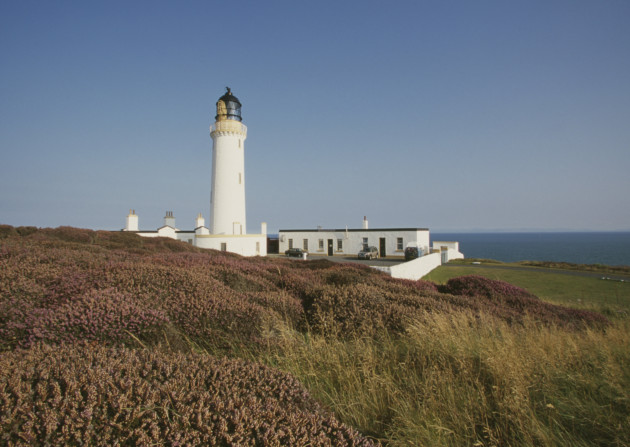
Lighthouse at Mull of Galloway RSPB reserve. Andy Hay (rspb-images.com)
The Galloway coastline crosses the borders of Dumfries-shire, Kirkcudbrightshire and Wigtownshire, before heading south into the remote landscape of the Machars and Rhins of Galloway peninsulas, culminating at the Mull of Galloway. A final, wonderfully rugged stretch travels north, where the highlights include Killantringan Bay and Corsewall Lighthouse, before finishing beside Loch Ryan at Stranraer and Cairnryan.
For first-time visitors to Galloway the opportunity to escape the crowds on such a fine stretch of coast may come as something of a shock, but the reasons are rather less surprising. Although Galloway is the third largest region in Scotland, it is also one of Europe’s most sparsely populated areas; as of 2011 Galloway had approximately 148,000 inhabitants and a population density of 60 people per square mile, compared to the Scottish average of 168 people per square mile.
The bigger coastal towns, such as Dumfries, Stranraer, Annan and the artist’s town of Kirkcudbright, may offer a little more hustle and bustle, but even then it never feels as if you are being rushed to do anything or go anywhere. What’s more, idyllic villages such as Portpatrick, Kippford and the Isle of Whithorn provide perfect bases to unwind and explore – wherever you are there is always room to breathe.
To truly appreciate this sensation of space the Mull of Galloway is the perfect place to start. Sitting at the end of a five-mile-long single-track road, Scotland’s southernmost point offers views of a seemingly endless expanse of water, broken only by distant views of the Isle of Man and Ireland.
As well as drawing tourists to visit its striking lighthouse, the Mull is an RSPB nature reserve, where puffins, fulmars, razorbills and guillemots nest on 200-foot high cliffs that are buffeted by the warm gulf-stream winds.
Caerlaverock Nature Reserve, which lies only a few miles from the bustling town of Dumfries at the edge of the Solway Firth, is also recognised as a crucial habitat for thousands of migrating birds. During the winter months this includes the entire population of Svalbard barnacle geese, which arrive following their annual 2,000-mile journey from the Arctic. When the reserve first opened in 1957 around 2,000 geese spent the winter at Caerlaverock, but, 55 years later, their numbers have swelled to over 31,000, creating a colourful, noisy and vibrant spectacle.
The nature reserve is also home to Caerlaverock Castle, which is the epitome of a mevieval stronghold with its moat, twin towered gatehouse and imposing battlements, and remains in remarkably good shape considering the numerous armies that have besieged it since it was built in 1270. Caerlaverock’s location near to the Scottish/English border made it an appealing focus for the likes of Edward I, the infamous ‘Hammer of the Scots’, and it survived various attacks until the Union of the Crowns in 1603 promised more peaceful times. This was short-lived, however, and the remains visitors can see today were those left by marauding Covenanters in 1640.
A few miles across the tidal waters of the Solway Firth are the spectacular cliffs of the Colvend Coast, home to Castlehill Point, the former site of an Iron Age Fort dating from 200AD, and the Mote of Mark, once supposedly a court of a mighty Dark Age Chieftain, possibly a prince of Rheged (an ancient kingdom in Northwest England). The site was certainly occupied during the 6th century, but was later destroyed by fire during the 7th. Excavations over the years have found the remains of a timber hut, imported jewellery, metalwork and glassware.
For more active travellers, the Colvend Coast also offers good hill walking and unforgettable views of the mighty Lake District mountains. Other higher vantage points along Galloway’s margins include Cairnsmore of Fleet, Screel and Criffel. Of these, Criffel’s 1870-foot summit is a conspicuous landmark along much of Galloway’s eastern shores, and provides some interesting detail into the coastline’s past. The Viking’s held it in great reverence when they were at the height of their plundering powers 1,000 years ago. In fact, the hill was held in such high esteem they named it Kraka-fjell, which translates from Norse as Raven’s Hill – the raven being the sacred bird of Scandinavia.
It was also around this period that a race of people, known as the Gall Gaidheil, landed along the coast. Having migrated south from Scandinavia and Hebrides during the 9th century, their arrival gave rise to the name Galloway, meaning Land of the Foreign Gael. Very little is known about the Gall Gaidheil except their dominant language was Gaelic, which, in turn, developed into Galwegian, drawing heavily on Manx and Ulster Irish, although, sadly, it is now extinct.
Christianity also arrived within Scotland in the remote and low-lying Machars region of Galloway. St Ninian landed in Whithorn around the 5th century and established his mission, Candida Casa (The White House), here. Nearby at the beautiful and remote fishing village of the Isle of Whithorn is St Ninian’s Chapel. Thanks to the name, many think St Ninian used the chapel, which actually dates from around 1300, approximately 900 years after his arrival. However the chapel was, for many centuries, the first port of call for pilgrims wishing to give thanks for a safe passage by sea before they travelled by foot the few miles to Whithorn.
Galloway’s pronounced association with Christianity is also evident at the three great abbeys of Glenluce, Dundrennan and Sweetheart. The coastline provided strong trade links with much of Europe and many villages established themselves near to these abbeys.
Sweetheart Abbey is the best known and arguably the finest of the coastline’s three abbeys. It was here, in 1269, that Lady Devorgilla was left grief-stricken by the death of her husband, John Balliol, and resolved to build an abbey in his memory. She lavished funds on the abbey’s construction using red sandstone in order to give it its distinctive appearance.
Lady Devorgilla had Balliol’s heart embalmed and placed in an ivory casket, which she kept with her when traveling, but after her death in 1290 their hearts were buried together. From this point the monks living and working there renamed the abbey Dulce Cor, Sweetheart Abbey.
Today the bulk of Galloway remains rural and its isolated position away from Scotland’s industrialised Central Belt has seen unemployment rising above the national average. Paradoxically this feeling of remoteness is the main attraction for the majority of both locals and tourists alike.
It is the Galloway Coastline’s historic buildings, its culture and heritage that have been central in encouraging 500,000 visitors to turn off the main tourist trail and come here every year. But rush your stay at your peril as you may easily miss something of interest along the way. Instead, take time to absorb Galloway’s remarkable history, wildlife and scenery – all of which combine to make this little-known coast so extraordinary.

